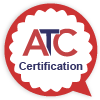Standards in Development
On this page, you can find out more about other published language industry ISO standards and standards in development.
The ATC is actively involved in the development of new ISO standards for the language services industry via the British Standards Institution (BSI) and the United Kingdom’s mirror committee at the ISO Technical Committee TC37 Language and terminology, and Sub-Committee SC5 Translation, interpreting and related technology, at the International Organization for Standardization (ISO).
You can view a list of published ISO standards and standards still under development at:
Standards by ISO/TC 37 Language and terminology
Read more about ISO standards development on our page about ISO standards development. Get in touch if you’re interested in getting involved in ISO standards development!

